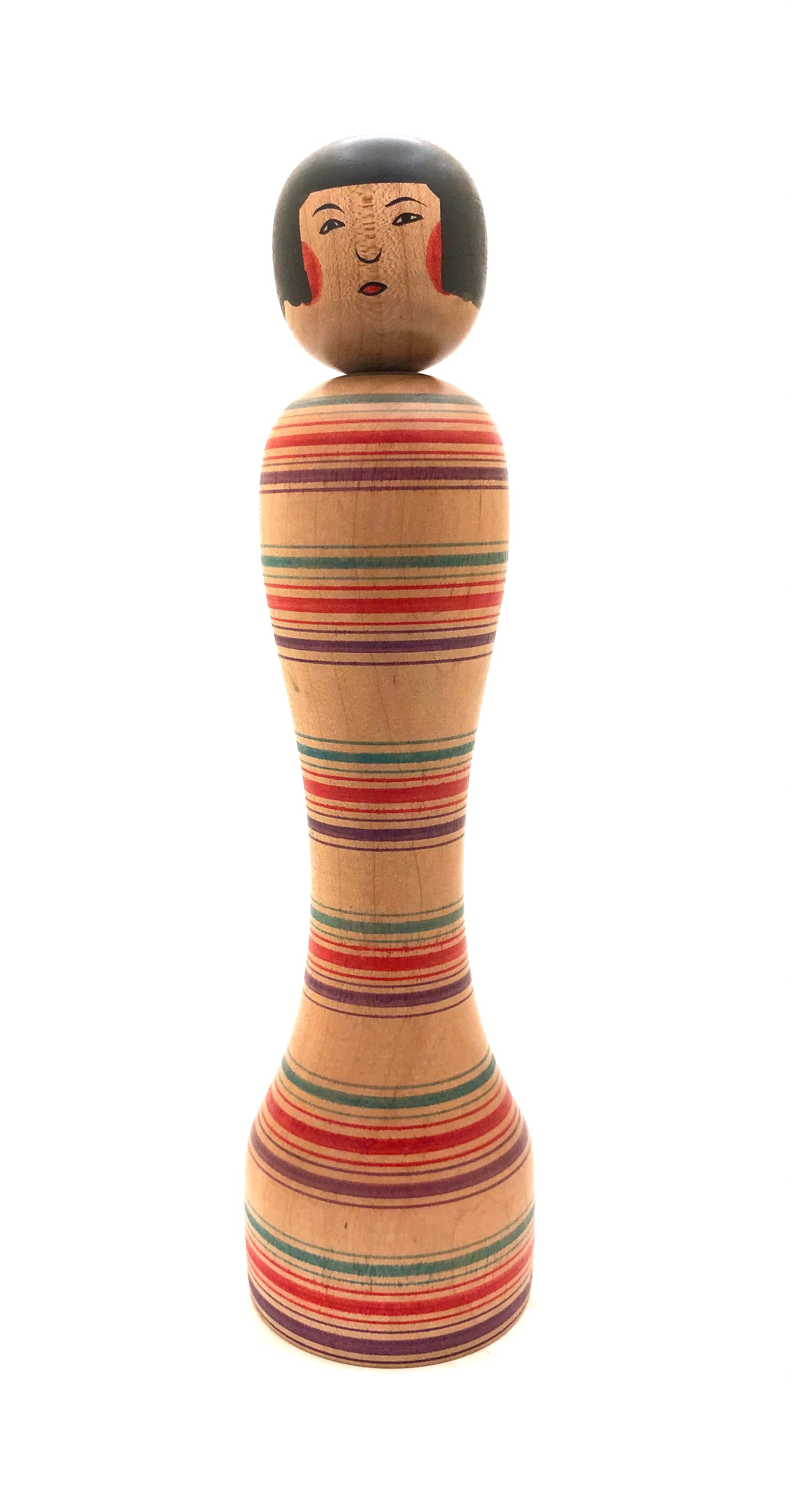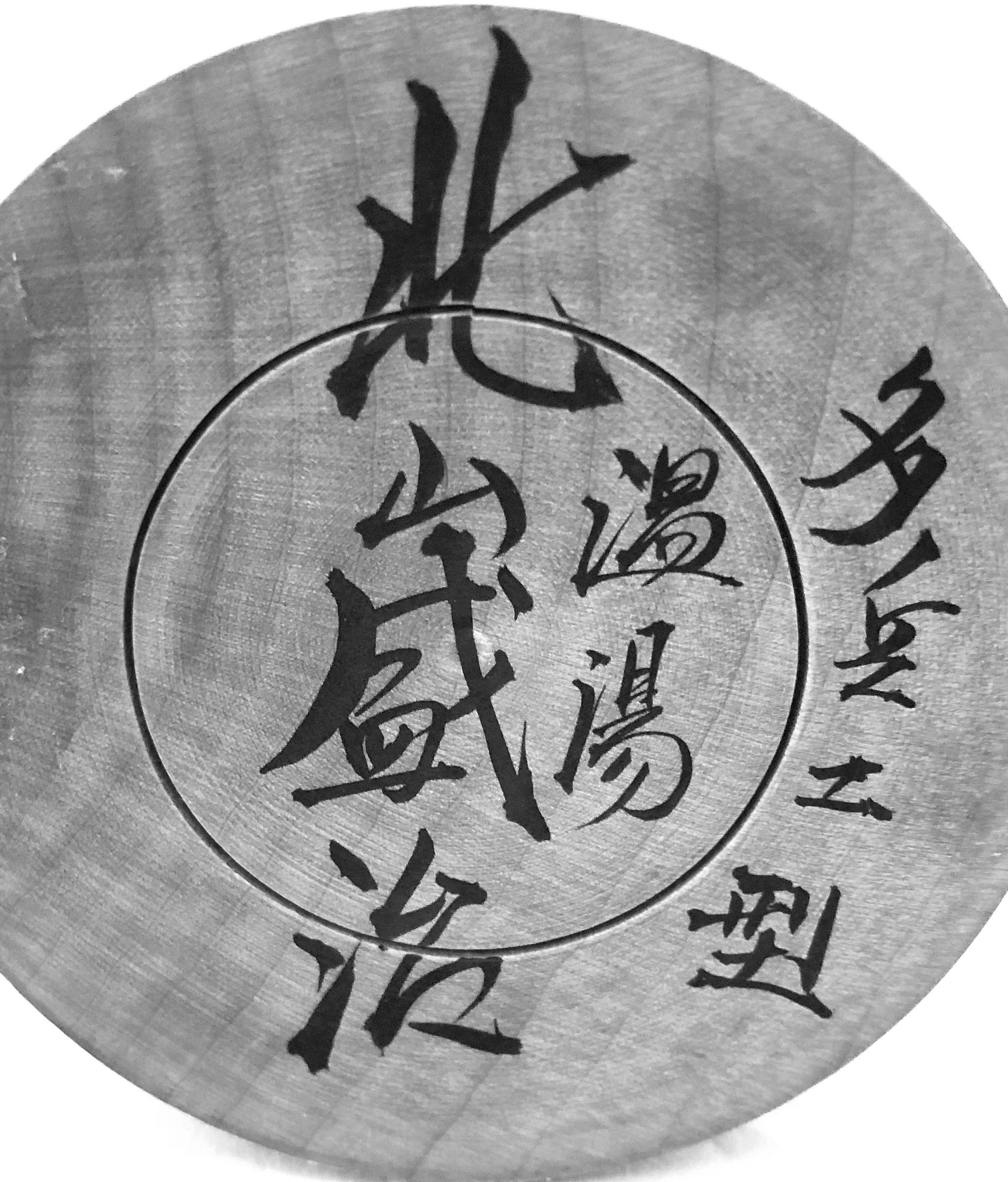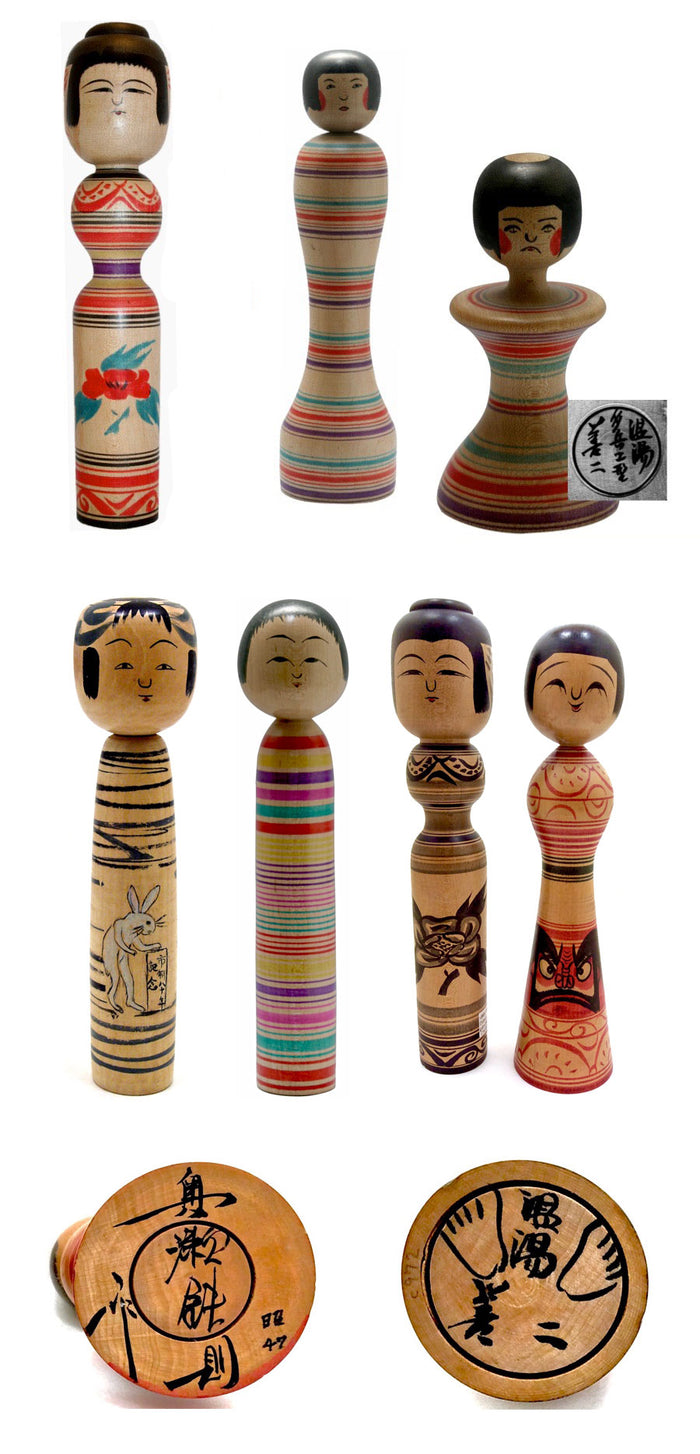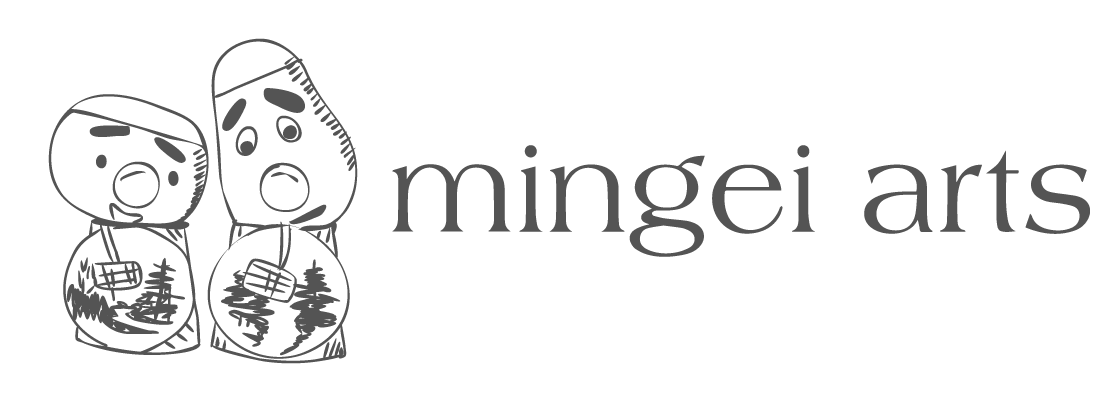

Traditional Vintage, Rare Tsugaru-Kei (‘Nuruyu’) Kokeshi by Moriharu, Kitayama
Dimensions: 10-3/4”h
Moriharu-san, (1947-) studied under master Yamatani, Kiyo where his pieces were originally sold at the Nuruyu Spa, Aomori prefecture, and is considered a rare strain of the Tsugaru family of dolls. Tsugaru artists were creating dolls for collectors, rather than staying within the boundaries of the original, typical Kokeshi, which were made as toys.
As seen in this beautiful doll, she has an undulating body and is made of one piece of wood with only one joinery element attaching the ‘bobble’ head to the body. The only decoration on the body is the Rokoru moyo varied circular banding in red, green, and purple. She has a round head and displays a more modern hairstyle painted in solid black, with a natural base wood color circle in the center and stylized trimming of the hair. Her eyes are extremely painterly and expressive, with a marubana, (round nose) and red-painted cheeks. The doll is signed and named on the bottom by the artist.
See additional writings on our website related to this subject: Under our Browse and Learn section, please refer to https://mingeiarts.com/collections/tsugaru-kei-family for full details on the history of this family of dolls.
Condition: This rare piece has no stains or imperfections and considered in excellent original condition, and retains the original craft/workmanship showing a wonderfully developed, untouched patina commensurate with age. This Kokeshi meets all the standards of Tsugaru Family Kokeshi collectibles.

Japanese Traditional Kokeshi
Tsugaru-Kei (Family)
Prefecture: Aomori
Origin:
Tsugaru is the youngest of the eleven traditional kokeshi strains. They began in the 1920s. A Tsugaru doll has a great deal of variety in its shape and pattern. The Tsugaru Kokeshi are made from a solid piece of wood, created using a difficult reverse lathe technique. The Tsugaru Kokeshi is the only strain to still use this method. The Tsugaru-kei developed after adults took an interest in buying more kokeshi as souvenirs from trips to the hot-spring resorts. Tsugaru dolls, which originated in the Aomori Prefecture in the region of the same name, are sometimes also known as Nuruyu dolls, originally fabricated by Hidetaro Mori. They made their appearance at Nuruyu (“lukewarm") Onsen, in the city of Kuroishi.
Collector's note – characteristics/painting style:
The dolls have round chests, thin waists, and cone-shaped lower bodies on which human faces are painted. They will strike you as quite unusual and interesting. One of the distinguishing features of this family of Kokeshi is a heavier hairstyle, in that most are Okappa styling, which has a full head of hair or mostly full head of hair in a bob style, and a chignon or topknot, without much decoration on the head. The hair is painted solid black, with brush strokes visible on the edges of the bangs and hair. One can easily recognize a Tsugaru doll because many will have the face of Daruma painted on the lower half of the body, with flowers painted on the doll looking quite realistic. The short history of the strain may not yet have given it enough time to utilize flowers such as White irises, peonies, and camellias. Stripes (Rokuro Moyo) appear at the top, center, or bottom of the doll. Some doll motifs, such as Ainu (native designs), that replace the Daruma image have simplified versions of peonies, irises, cherry blossoms, and camellia.
NOTE: We have seen a few dolls with the image of Daruma that were created by Sato, Zenji, (b.1925), in which he drew “feet” on the bottom with his signature, which was inspired by his mentor and master, Mori, Hidetori, (b1895), who used the same interesting humorous addition since kokeshi never incorporated feet.

Leading, Craftsmen:
Abo, Muchihide, 1950, (Hirosaki, Aomori) - Master: Sato, Zenji. No additional published information
Mori, Hidetaro, 1895 (Nuruya, Aomori) - Master: Mori, Motokichi. No additional published information
Mori, Mitsuo, 1955 - Masters: Mori, Hidetaro & Shin-ichi. No additional published information
Muramoto, Fumio, 1941- Master, Mori, Senzo. No additional published information
Okuse, Tetsunori, 1940 - Master: Mori, Hidetaro. No additional published information
Sato, Yoshiki, 1949, (Omani, Aomori) - Master: Mori, Hidetaro. No additional published information
Sato, Zenji, 1925, Master: Mori, Hidetaro. No additional published information
Explore & Learn More about Tsugaru-Kei (Family)